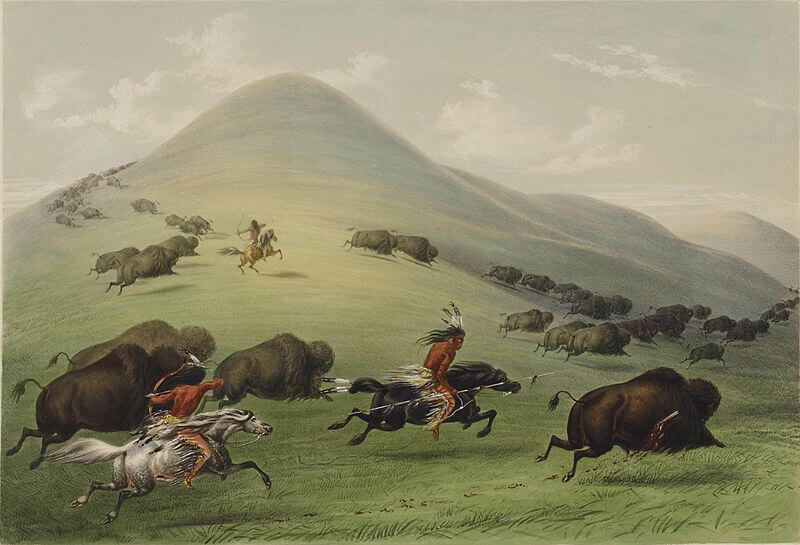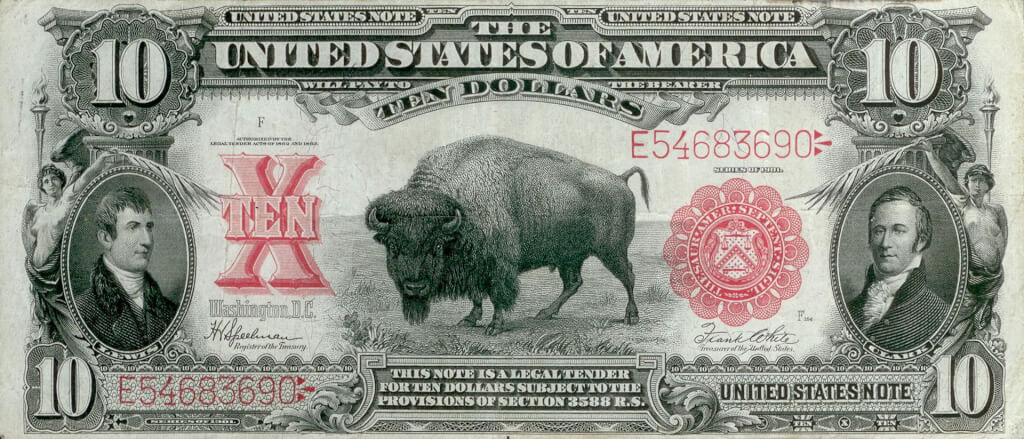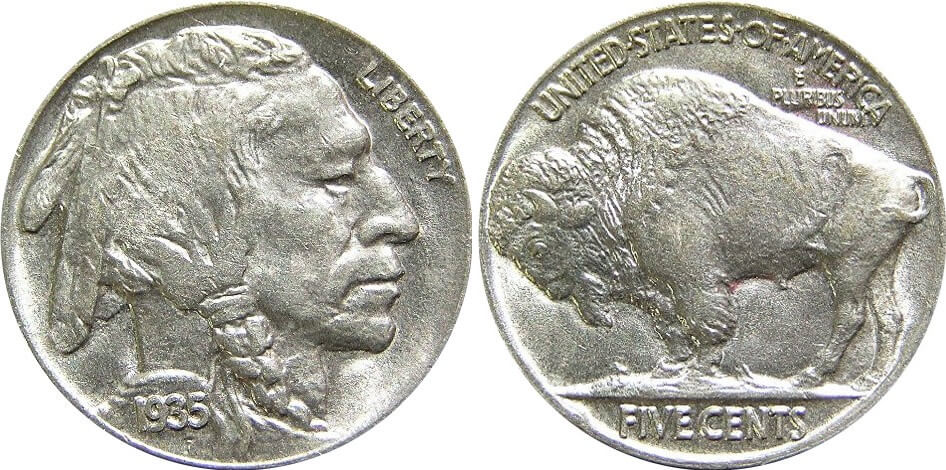Bison: The History of the American Symbol
The more often we travel around the world, the more we become convinced of its diversity and diversity. We are talking not only about the national characteristics, architecture, or way of life of specific countries and regions, but also about the differences in their nature, climate, landscape, with the flora and fauna that predominate there. One can easily imagine how the first settlers, who arrived here mainly from Europe, were amazed by the American environment. And given its vast expanses, it is not surprising that flowers, birds, trees and animals in each state of the future united country were very different from each other. So in its north, priority was given: in New York state - rose, bluebird and sugar maple, in Minnesota, lady's slipper, loon and red pine, and in Montana - Lewisia, lark and yellow pine. In the south: in Texas - cornflower, mockingbird and dwarf palm, and in Arizona - cactus, cactus wren and acacia. While in the west: in California - poppy, prairie quail and poplar. And in the east: in North Carolina - dogwood, cardinal and southern pine. With 50 states in the country, these differences were simply enormous. Nevertheless, it was still possible to identify the main common symbols for the entire country: a bird, a tree, a flower and a representative of mammals. Among the latter is bison.
9 May 2016 President Barack Obama signed the law recognizing the North American bison as the official National mammal of the United States. In the English transcription of "North American bison of the official National Mammal of the United States". Of course, theoretically, the inclusion of bison in this class - mammals, or feeding with milk, is quite correct. Moreover, we cannot enter into polemics with representatives of Congress, who have decided to look at this problem so widely. But then we will need an incredibly long time to break through to the buffalo from muskrats and domestic cats. It is easier to narrow this gradation to bovine hoofed mammals. Then we will be among the bulls, buffaloes, yaks, bison, that is, "in their company." And we will be with whom to compare. Well, not with the same raccoon, or fox, which are also mammals.
So, bull. This topic is relatively familiar to all of us. There are cows and there are bulls, which among the ancient Slavs were respectively symbols of fertility, abundance and prosperity, and on the other hand, power and wealth. Their ancestors were wild bulls, a huge unbridled herd that had long since become extinct. Wild and the first domesticated bulls were used, as a rule, only for meat. However, with the growing dependence of people on agriculture, they began to be used mainly as labor: for many centuries they were the main draft animals and remain so in many third world countries to this day. Having acquired at the same time, offensive for such powerful and beautiful animals, the name of cattle. Among them, breeding bulls, or stud males, are selected, which are the main value in livestock farming, since they are used in breeding to produce purebred offspring. The largest of them are predominantly Chianine bulls or porcelain bulls.
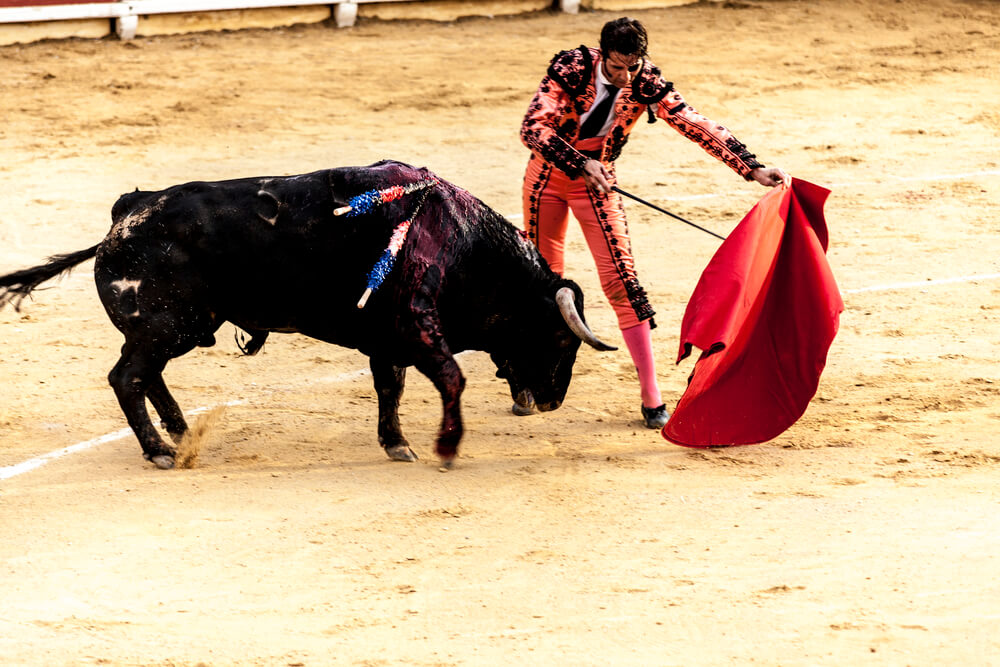
Фото: Depositphotos
This Italian breed is valued for meat, which is considered the best in the world. Now an adult grows to 180 centimeters at the withers, with a weight of more than a ton. Large bulls and cows usually reach height up to 160 centimeters. By the way, porcelain bulls have such an impressive weight not at the expense of fat, but at the expense of muscles. They hide the phenomenal power and power of the champions. Therefore, they are used in Spain and Portugal to participate in bullfights on foot and horse corrid. This amazing and exciting spectacle is best read in the Hemingway novel “The Sun Also Rises”, or immediately come to Pamplona during the encerro, and see everything with your own eyes.
African buffalo. One of the largest modern bulls. The weight of adult males sometimes reaches 900 - 1000 kg, and specimens weigh 700 kg. are no longer rare. The height at the withers in adult males is up to 1,8 m, usually 1,5-1,6 m, with a body length of 3.0-3,4 m. In addition, forest buffaloes are much smaller than those living in the savannah. The horns of the African buffalo are very distinctive. Their characteristic feature is that in adult bulls the bases of the horns on the forehead grow together, forming something like a solid bone shield, which even a rifle bullet cannot always penetrate. From the base, the horns spread out to the sides, then bend down, and then smoothly bend up and inward.
The buffalo population in Africa has been preserved compared to the population of other large animals on the continent. Due to its large size and ferocity, the buffalo is one of the most honorable hunting trophies, although hunting for it is strictly regulated. It is included (along with the elephant, rhinoceros, lion and leopard) in the so-called “big five” of the most prestigious trophy animals in Africa.
Asian buffalo. In many places and in India they have been domesticated since ancient times. The domestic buffalo differs from the wild buffalo in its calmer disposition, shorter (usually) horns, and also in its physique: its belly is very convex and sagging, unlike the leaner wild buffalo. Nowadays, the domestic buffalo is one of the main farm animals in the countries of Southeast Asia, India, and southern China, where it is impossible to imagine cultivating rice fields without them. In Vietnam, Thailand and Laos, domestic buffalo fights are often held, mainly for the needs of tourists, which take place without human intervention. They are released onto a special platform, one against the other, and butt heads until one of them runs away from the battlefield, or shows undoubted signs of defeat (for example, falls at the feet of the winner). But what’s most interesting to you and me is
American Bison,
which is the largest mammal in North America. It is believed that his ancestors came to this continent from central Asia during the last Ice Age, through the frozen Bering Strait. Hence there are so many similarities with the bison that still live there. The length of the bison's body reaches four meters, the height (in the hump area) is about two. The weight of a male individual sometimes reaches 1.30 tons. Bison are born reddish-brown, but after six months their color becomes darkish brown. Sometimes there are bison with light spots, or albinos. Their appearance so amazed the Indians that many revered them as a deity. Bison's hair is very thick and provides powerful thermal insulation; it is longer on the front of the body. The snow that covers it never melts.
In winter, they can find their food, even if the thickness of the snow reaches one meter. They scatter it with their hooves, and then dig holes, helping themselves with their heads and snouts. Nevertheless, in winter, the buffalo try to go south, migrating in streams of tens of thousands of individuals, searching for little snowy areas where the wind blows snow away and it is easier to find food. During these movements, having a large weight, they often fell through the ice when crossing over snow-covered rivers and lakes, because of which they died en masse. There is an opinion that even during the construction of Manhattan (New York), mass remains of bison skeletons, drowned when they crossed the Hudson, were discovered.

Фото: Depositphotos
In America, two subspecies of these animals are widely known: the steppe bison (Bison bison bison) and the wood bison (Bison bison athabascae), which differ in structure and wool.
The steppe bison is distinguished by a rather large head, with a dense cap of hair between the horns, which most often do not protrude above the hair. The highest point of the hump is located above the front extremities, the beard is thick, the mane is pronounced on the throat, the color is lighter compared to the forest subspecies. In addition, the steppe bison is smaller in size and weight.
The forest bison has a small head with a dark bang on the forehead, over which horns protrude. The highest point of the hump is located above the front legs, the beard is rare, the mane on the throat is not pronounced, the color is dark, the weight and size are larger than those of the steppe counterpart. True, forest buffalo made up only one sixth of the total population and lived in the northern regions of the continent, right up to Alaska, while their steppe congeners were inhabitants of the Great Plains.
Regarding the humpback characteristic of the Indians, there was a belief that it was not in the old days. But somehow one of their ancestors received a hump as a punishment for rushing along the prairie without breaking the road, and on the way he trampled down a bird sitting on a nest. Since then, all the bison not only have a hump around their neck, but also keep their heads low, supposedly from shame.
Bison have a well developed ear and smell. They emit a musky scent that is heard from afar. Their voice is deaf and it sounds like a bellow.
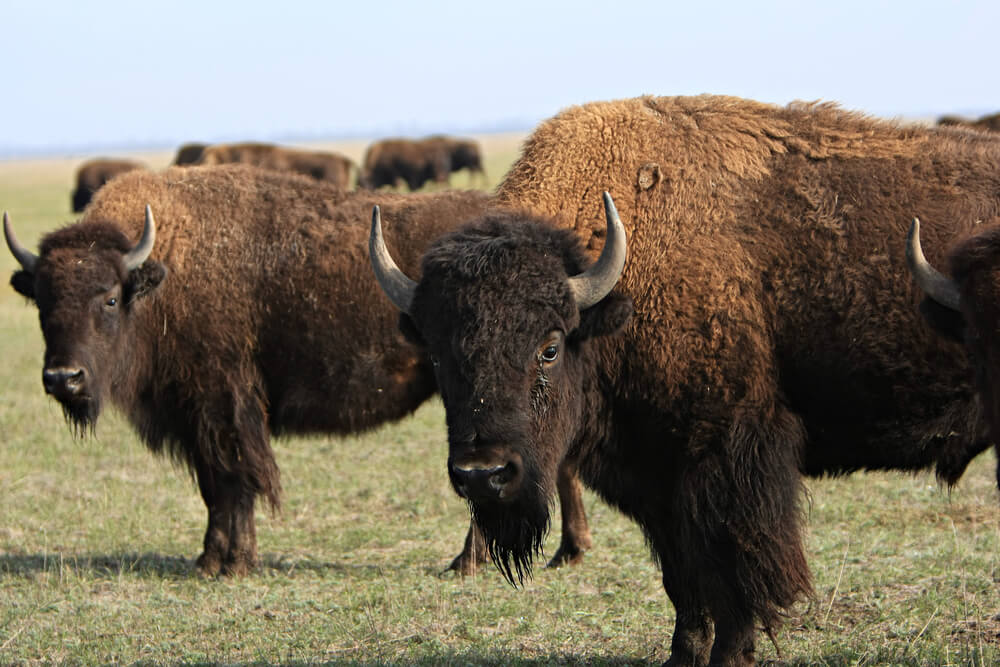
Фото: Depositphotos
Bison is a herbivore animal. Its diet consists mainly of grass, which it eats up to 25 kg per day. Bison living in forests also feed on moss, lichen and branches. You can imagine what huge areas are required for a herd of several hundred heads. In this regard, the way of life of their nomadic, and in search of food, they pass to overcome about three kilometers a day. Animals sleep at night, but not for long, and almost all of their time is spent grazing.
They live in small groups, uniting into fairly large herds in the summer. Most bison live 13-15 years, although there are examples that they “reach out” to 25-30. The main habitats are river valleys, as well as prairies and plains. Their typical environment is open grasslands and semi-arid lands. They also graze in hilly or mountainous areas. Herds of bison in Yellowstone Park have been encountered at altitudes of more than 2 meters, and the herd living in the Henry Mountains area grazes in mountain valleys at altitudes of more than 3 meters. They go to water once a day, and during severe frosts they eat snow. Thanks to their well-developed sense of smell, bison sense approaching danger at a distance of up to two kilometers, and water - up to 7-8 kilometers.
The bison looks clumsy in appearance, but moves quickly and easily, at speeds of up to 50 - 65 km/h, and can jump up to 1,8 meters in height! Swims well. Tourists often underestimate the speed of bison and overestimate their submissive nature, which is why in Yellowstone Park they attack people much more often than other animals living there.
Bison live in herds, which are led and guarded by several old males. Young animals are frisky and playful, so the older ones always take care of them. Outside the mating season, males and females live apart. Females with calves form herds of 25-30 individuals, males live one at a time or create groups of bachelors with 10-15 heads. Often lead fierce battles for females. They converge nose to nose and butt, resting their foreheads. These seemingly heavy and slow movements are in fact very powerful.
This is why bison can inflict very serious wounds on each other, even fatal ones. At the end of the rut, the herds again fall into small groups. Pregnancy in female buffalo lasts about 9 months. It is interesting that when a calf is to be born, the mother does not leave the herd, and all members of the herd joyfully greet the newborn, sniff together, lick it. Baby quickly rises to his feet and almost immediately ready to follow his mother.
This is how the herds of these unusual and powerful animals existed until it happened. history of extermination and salvation of bison.
The stay of bison on the territory of North America goes back thousands of years. At least, there are a lot of rock paintings in the caves of the indigenous people, dating back to the Stone Age. So on the ceiling in the cave of Altamira (Pyrenees) giant images of bison were discovered. Their size was more than two meters. The authenticity and artistic expressiveness of these paintings, where both peacefully grazing buffaloes and a beast wounded in the stomach, are striking. These images are an element of animal worship, they were used in magical rites. In order for the hunt to succeed, it was necessary to first kill the animal depicted on the wall of the cave, so the cave paintings often store traces of arrowheads and spears.
The buffalo herds were huge back then. It is widely known that by the beginning of the 60th century their population numbered more than XNUMX million. Not every country can be proud of such a number of inhabitants. Naturally, Indian tribes have long hunted bison, since for many of them they were in many ways one of the main sources of life. Their meat was quite tasty, and the tongue and hump, rich in fat, were considered a delicacy. Dried and coarsely ground bison meat, called pemmican, served as the Indians' winter supplies. The Indians made clothing from the tanned skins of young animals; In addition, buffalo skins were used for tents, saddles and belts, and thick skins were used for coarser types of leather, especially for soles. They made dishes and knives from the horns; from tendons - bowstrings, threads, from hair - ropes; and animal fur was used to insulate the inside of moccasins, stuff pillows, and use them to create hats. Glue was boiled out of tendons and muscles. No part of the animal's body was wasted. Even the tail was used as a fly swatter or as a hair brush.

Фото: Depositphotos
It cannot be said that the hunt for buffalo for the Indians was simple, since it was difficult to fight with such powerful animals with the weapons of their warriors: stone, knife, combat mace, spear and tomahawk. Therefore, over time, the main technique was worked out: in the course of movement of the herd of buffalo, they were looking for a high rock, with a gorge or a deep ravine behind it. A penshall was arranged near it, either a natural fence was used, or simply a forest was set on fire in a ring. And then the frightened and distraught animals flew in a particular direction. As a result, they fell into a ravine and broke to death there.
Since the Indians hunted bison solely to satisfy their needs, the number of artiodactyls remained stable. But time passed, and new settlers arrived in America, who, for various reasons, began to conflict with the local population, who, naturally, considered themselves the owners of this land. Initially, the Indians were the losing side in these disputes, since they had never seen a horse that could catch a buffalo, nor a firearm that could immediately kill it. But soon, the Indians either ransomed them, stole them, or fought them off in skirmishes, and now they themselves had guns and fleet-footed horses. This dramatically changed the methods of hunting bison, but still slightly reduced their numbers. However, soon new settlers also went out on the “big buffalo hunt”. At first, they simply traded with the Indians, buying bison meat from them (sometimes for big holidays, or delicious tongues for restaurants), as well as skins. They were used to make blankets and carpets, warm robes and other clothing, and the skin was used to make drive belts for industrial machines.
Due to the lack of refrigerators, buffalo meat was mainly sold nearby (with a slight increase in sales in the winter), while the skins could be transported for an arbitrarily long time. Therefore, as the demand for skin increased, the new settlers themselves were actively involved in the bison hunt. True, there were objective reasons for the decrease in their livestock. The herds of buffalo suffered from epidemics, steppe fires, cold snap, hurricanes and floods. On average, between 1 and 3 million bison died annually through their fault. Not to mention the fact that every ten years in the prairies there was a drought. From lack of food, up to ten percent of the herd of buffalo was lost.
So the number of huge bulls gradually decreased a little by itself. But in the meantime, the West was settling more and more intensively, and by the beginning of the 1800-s the contradictions between the newcomers and the local people were becoming more and more striking and irreconcilable. In 1825, the US Supreme Court, in one of its decisions, formulated the Discovery Doctrine, according to which the right to "open" lands should belong to those who "opened them", and the indigenous population retained only the right of residence on them, but not ownership of land . On the basis of this doctrine, already in 1830, the Law on the Indians' Migration was adopted, the victims of which are Five civilized tribes. And finally, in 1867, the Law on the Relocation of Indians on the Reservation appears. But what simply looked on paper was not at all so easy to implement in life.
Is it possible to imagine that the tribes for many generations who lived on these lands, so simply and easily want to move to unknown, as a rule, little adapted for living places. Naturally, they desperately resisted. After all, for them, taking into account the long transitions to the uninhabited places, the real question was about life and death. Because the army often lost in this combat. And then the "smart" American generals decided to defeat the Indians in a different field, with the help of ... bison. After all, if the Indians are deprived of food the main means of livelihood, they will either have to change their place of residence or die of hunger.
American General Philip Sheridan wrote: “The buffalo hunters have done more in the last two years to solve the pressing problem of the Indians than the entire regular army has done in the last 30 years. They are destroying the material base of the Indians. Send them gunpowder and lead, if you like, and let them kill, skin and sell them until they exterminate all the buffalo! Sheridan even proposed in the US Congress to establish a special medal for hunters, emphasizing the importance of their extermination of bison. He was also the author of the saying “A good Indian is a dead Indian.” This behavior of the military could be reduced to their martinetry and inability to intelligently and correctly solve the problems that arose, but now the statement of Columbus Delano, the Secretary of the Interior of President Ulysses Grant, dating back to 1873, is also known: “The civilization of the Indians is impossible while the bison remain on the plains.” Thus, military tactics gradually became state tactics. Meanwhile, railroad construction grew in the country, and they rushed west. With their installation, and the introduction of ventilated and refrigerated wagons, the consumption of bison meat increased sharply.
However, the railway companies have contributed to the reduction of the number of buffaloes, not only providing fast delivery of goods to hunters and traders. During the construction of railways, they also bought from hunters meat of buffalo for feeding a huge army of road workers, whose number was constantly increasing. Later, companies sought to reduce the number of buffalo due to the fact that their huge herds, crossing the railway tracks or taking shelter from the winds behind the railway embankments, delayed the movement of trains. Not to mention the cases of collision of locomotives with animals, causing damage to equipment and railway tracks. Although, theoretically, all this was to be expected. After all, topographers, outlining the routes of railways, primarily used trails laid by herds of bison, since over the centuries they have developed the most convenient and optimal paths of passes through the passes and around rivers and lakes.

Hunting for buffalo from the train. Photo: Wikimedia Commons / Library of Congress, public domain
Ultimately, the leaders of the railway companies, wishing to increase their income, began, for a certain fee, to provide passengers with the opportunity to shoot bison from windows or car roofs. Even special hunting trips were organized, after which hundreds of senselessly killed animals remained to die and rot along the web. Sometimes the hunt reached the point of absurdity: only tongues were taken from animals, leaving countless carcasses to rot. The killing of buffaloes became signs of the prowess and heroism. We have already told you (see the Cowboys chapter) about Buffalo Bill, who was hunting for buffalo to supply the US Army and employees of the Kansas Pacific Railways, who had a monument erected in his homeland.
According to his own statement, while working for the railroad company in 1867-1868, he killed more than 4 thousand buffalo over 18 months. It was then that he received his nickname - “Buffalo Bill”. Being an excellent shooter and an experienced hunter, Buffalo Bill more than once acted as a huntsman and guide when organizing hunts for important people. So in January 1872, on behalf of that same General Sheridan, he, “as entertainment,” organized a bison hunt for Grand Duke Alexei Alexandrovich, the son of the Emperor of the Russian Empire, Alexander II. With the advent of long-range, powerful Sharps rifles, hunters could already kill buffalo in large numbers from a considerable distance. One such hunter could shoot from 100 to 300 animals per day. Like L. Filatov’s: “In the steppes of Arizona, on a hot night, carbines rattle and whips whistle. Big hunt, big trouble: The buffalo herds are rushing to the West, they are rushing to the West, they are rushing to the West.”
But they remained less and less. And in the 1870 years, after the 30 years of commercial hunting, and the policy of the US Army to destroy bison, it was possible to bring the once huge herds to almost complete extinction. True, since the beginning of 1870, the question of taking a number of measures to prevent the complete destruction of the population has been repeatedly raised in parliament, but they did not receive support there. At the beginning of 1889, only 200 flat bison in Yellowstone Park remained, 85 was free outside, 256 was in zoos and private herds.
By 1894, there were no more bison left in the wild; only 20 animals remained in Yellowstone Park, since the rest were exterminated by poachers as soon as they left the park. By the mid-1890s. the situation became critical, and only then a law was passed prohibiting hunting of animals, but so far only in the Yellowstone Reserve. A certain shift has emerged on the basis of the New York Zoological Society and its zoo. In December 1905, the American Bison Society was founded, a national public organization designed to unite the efforts of individuals and the state to preserve and restore bison, with the support and chairmanship of the 26th President of the United States, Theodore Roosevelt. Thanks to him, bison reservations began to be created in different states of the country, due to which bison began to appear in many zoos around the world. Gradually the herd began to grow. And since 1970. – Interest in these animals has begun to return nostalgically in the country. In addition to ranchers, Indian tribes, famous American politicians, businessmen and philanthropists are joining the industry. Thanks to this increased interest in bison, their images appear on American coins and bills.
And then on postage stamps. Moreover, the bison were so expressive on them that they soon began to be issued by the postal services of many countries.
It is noteworthy that the world’s famous media tycoon Ted Turner has now become the largest Bison expert in North America. With funds received from the sale of the world's largest information company, he organized a network of ranch reserves, primarily to restore American bison. He created the world's largest non-state network of steppe protected areas with an area of about 800 thousand hectares, where more than 55 thousand bison live. In the first decade of the XXI century. Growth of livestock in bison industry averaged 10 – 15% per year and by 2010g. it reached almost 500 thousand, or more than 90% of all lowland bison in the world. It should be noted that nowadays the bison are partially represented beyond the borders of America. For example, in national parks and reserves of Canada there are more than 30 thousand bison, small herds live in Prioksko-Terrasny reserve in Russia, and in Ukrainian Askania-Nova. And in the zoos of the world, buffaloes are no longer a special rarity.
More often, however, there are crosses between bison and bison, the so-called bison, which, unlike hybrids with livestock, are unlimitedly fertile. And the inhabitants of America traditionally call the indigenous bison Buffalo. This name has no connection with the city of Buffalo. Although it gave birth to a traditional tongue twister in English consisting of 8 identical words in a row, without punctuation: Buffalo buffalo Buffalo buffalo buffalo buffalo Buffalo buffalo. Which can be translated as: “Buffalo bison, scared by other Buffalo bison, scared by Buffalo bison.” Since we are already talking about linguistic incidents, we should clarify whether the name of a part of post-war Europe - “Bisonia” - is connected with American bison. No. This is simply the name given to the united British and American zones of occupation of Germany (the prefix bi means “two” in Latin). When France annexed its zone of occupation to them, Bisonia theoretically became Trizonia, but very soon it was renamed the Federal Republic of Germany.
And in the end, a completely striking story about bison. For centuries, it was well known that they could not be tamed, or domesticated, like buffaloes, the more they are not trained. Otherwise, why kill them, because it was much easier to tame and adapt to hard work, like cattle. However, Arsi Bridges, nicknamed “Bullmaster” and his wife Sherron, managed to do this.

Photo: YouTube / BBC frame
They now share their home in Texas with two bison, the 800-pound Wild Thing and the 300-pound Bullet, who are gradually gaining weight. Bridges was a cowboy and horse trainer for most of his life, also working with bison and buffalo. After an eye injury in 2004, he was forced to sell his herd - with the exception of one young bison, which he decided to keep as a pet.
Then another one was added. Of course, life for this family is unpredictable and dangerous, but their two adult children are proud that their parents have such unusual pets. They even set several world records with their help: the son became the first person to ever ski behind a buffalo - on water skis and on sand. And the daughter harnessed the bison to the sled. Be that as it may, it was an American citizen, Ercy Bridges, who was included in the Guinness Book of Records as the only person who managed to tame and raise such dangerous animals in his home. This fact further fueled interest in the life and existence of bison.
And so, in the wake of the ever-increasing interest of Americans to their origins, in May 2016, the President of the United States signed the law recognizing the bison as an American national symbol. What can be regarded as a sign of the restoration of historical justice.
instead of an epilogue
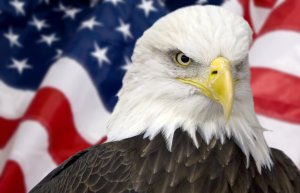 Фото: Depositphotos |  Фото: Depositphotos | 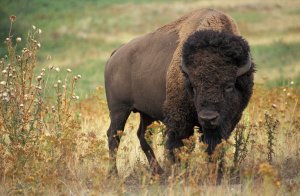 Photo: wikimedia.commons |
As Joseph Utkin once wrote:
“How many houses are covered, So many countries are covered.
Each house has its own homeland, its own ocean.
And under each weak roof,
No matter how weak she is, - Her happiness, Her mice, Her own destiny ... "
And your birds, animals, your tree and your flower.
But pay attention to how America chooses its symbols. If it’s a monument, then the most grandiose one in the world at the time of its construction – the Statue of Liberty. If it is an obelisk, then the tallest one in the world is the Washington Monument. Gateway to the West Arch in St. Louis (Mississippi), 192m high. the largest in the world. We see a similar situation here. Of course, there are countries that use the barn swallow as their symbol, like in Austria, the blue jay in Canada, or the robin in Great Britain. The picture is similar in our states: Iowa chooses the goldfinch, Washington chooses the chaffinch, and Alabama chooses the partridge. But the country chooses the eagle. The king of the air, the strongest and most powerful bird. However, taking into account the fact that the country is located between the coasts of two oceans, the sea eagle is a beautiful bald eagle. How could wise Franklin insist on turkey? Is it possible to imagine that the main symbol of the country was the main dish of the Thanksgiving dinner, and everyone could, tearing off a piece from it, argue with the guests at this time: which wine is better to use it with?
The same is true of wood. It is clear that Canada chooses maple, Greece - laurel, and Japan - sakura. There is a wide variation in the USA by states: from pine and spruce to poplar and maple. But the country chooses oak. The most powerful, tall and huge tree. Sacred, aspiring to the sky, but standing confidently and securely on the ground. Of course, it was possible to take and redwood. It is the tallest in the world and has more oak in its girth, and it lives much longer. But this is known only to experts. And her name says little to the general public. Oak is another matter. Everybody knows about him, and his name comes into our consciousness from an early age: “The Lukomorye has a green oak, a golden chain on that oak ...”
Everything is simple with flowers here. Of course, you should choose a rose, the world recognized and most beautiful flower in the world. But can the United States choose a different symbol when there is already a flower in the flower kingdom, which has firmly established the title of queen or queen?
The same situation with bison. There is even nothing to compare with. Bison are now the largest and most powerful breed on the continent. And even if someone was like them in importance, then destroying almost 60 in a century, dear. animals, the Americans simply had to make his figure a sign, if only as a sign of repentance. So, here are such wonderful symbols for the USA now: eagle, oak, rose and bison. All of them exactly fit the "roof" of one of the most significant countries in the world.
This article by ForumDaily author, journalist Leonid Rajewski is part of the “History of American Symbols” series.
Read also on ForumDaily:
Rose: the history of the American symbol
Oak, Sequoia and Christmas Tree: The History of the American Symbol
Bald Eagle and the United States Great Seal (Coat of Arms): The History of the American Symbol
From Colombia to Uncle Sam: The History of the American Symbol
The White House: The History of the American Symbol
Dollar: the history of the American symbol
Bourbon: the history of the American symbol
Flag: the history of the American symbol
Statue of Liberty: the history of the American symbol
Apple Pie: The History of the American Symbol
Hot Dog: The History of the American Symbol
Subscribe to ForumDaily on Google NewsDo you want more important and interesting news about life in the USA and immigration to America? — support us donate! Also subscribe to our page Facebook. Select the “Priority in display” option and read us first. Also, don't forget to subscribe to our РєР ° РЅР ° Р »РІ Telegram and Instagram- there is a lot of interesting things there. And join thousands of readers ForumDaily New York — there you will find a lot of interesting and positive information about life in the metropolis.

